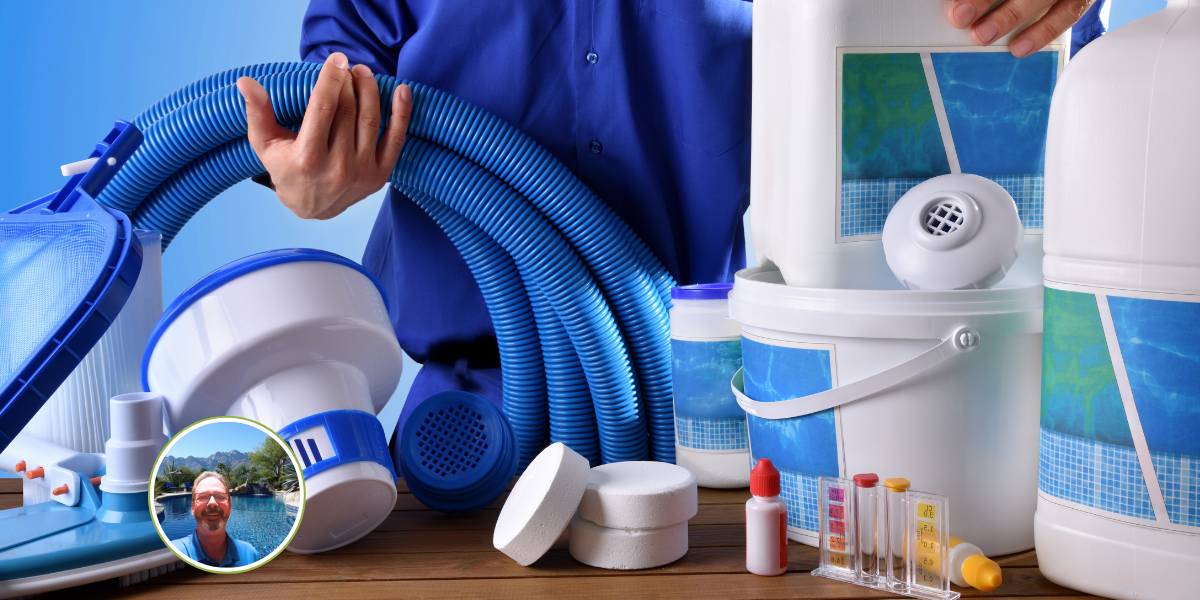Proper Chemical Balance for Arizona Swimming Pools
Arizona pools face unique challenges with high calcium, intense sun, and fast evaporation. Learn how to maintain proper chemical balance and keep your water safe, clear, and enjoyable year-round.

Introduction
Owning a swimming pool in Arizona comes with incredible benefits—relief from the desert heat, a place to entertain, and an oasis in your backyard. But keeping that water clear, safe, and inviting takes more than routine skimming and brushing. Proper chemical balance is essential, especially in Arizona’s harsh climate. With triple-digit summers, mineral-heavy water, and high evaporation rates, pool chemistry in this region requires more attention than in other parts of the country.
Why Chemical Balance Matters
Balanced water chemistry ensures that your pool is safe for swimmers, protects pool surfaces and equipment, and prevents costly issues like scaling, staining, and algae growth. Unbalanced water doesn’t just look bad—it can become unsafe and cause damage that requires expensive repairs.
The primary water chemistry factors to manage are:
- pH Levels
- Total Alkalinity
- Calcium Hardness
- Chlorine (or sanitizer levels)
- Cyanuric Acid (Stabilizer)
Let’s break these down.
pH Levels
- Ideal Range: 7.4 – 7.6
- Why It Matters: pH controls how acidic or basic your pool water is. If it’s too low, the water becomes corrosive, damaging plaster, tile grout, and equipment. If it’s too high, it can cause cloudy water and reduce the effectiveness of chlorine.
- Arizona Tip: Because of high evaporation and mineral-heavy fill water, pH levels tend to drift upward quickly in Arizona pools. Frequent testing is crucial.
Total Alkalinity (TA)
- Ideal Range: 80 – 120 ppm
- Why It Matters: TA acts as a buffer for pH, preventing dramatic swings. If TA is too low, pH will fluctuate wildly. If it’s too high, it can cause scaling and cloudy water.
- Arizona Tip: With frequent topping-off due to evaporation, TA often climbs higher than it should. Using muriatic acid is usually necessary to bring it back in balance.
Calcium Hardness
- Ideal Range: 200 – 400 ppm
- Why It Matters: Arizona water is naturally high in calcium. Too little calcium and the water will pull it from your plaster, causing etching. Too much calcium and you’ll get scale on tile, walls, and equipment.
- Arizona Tip: Because calcium levels rise quickly with evaporation and refill cycles, most Arizona pools eventually require a water change or reverse osmosis treatment every 3–5 years.
Chlorine (Sanitizer Levels)
- Ideal Range: 2.0 – 4.0 ppm
- Why It Matters: Chlorine kills harmful bacteria and algae. Without it, pool water becomes unsafe to swim in. Too much chlorine, however, can irritate eyes and skin.
- Arizona Tip: The sun’s UV rays burn off chlorine rapidly. Always maintain proper levels and consider using stabilized chlorine tablets or adding liquid chlorine frequently in the summer.
Cyanuric Acid (CYA or Stabilizer)
- Ideal Range: 30 – 50 ppm
- Why It Matters: CYA protects chlorine from being destroyed by sunlight. Without it, your pool can lose all its chlorine in just a few hours under Arizona’s intense sun. Too much CYA, however, reduces chlorine’s effectiveness.
- Arizona Tip: Pools that rely heavily on chlorine tablets often see CYA climb too high. Dilution or water replacement is sometimes the only solution.
Arizona Pool Chemistry Cheat Sheet
| Chemical | Ideal Range | Why It Matters | Arizona Tip |
|---|---|---|---|
| pH | 7.4 – 7.6 | Keeps water comfortable and prevents corrosion or scaling. | Arizona water tends to push pH higher — test often. |
| Total Alkalinity | 80 – 120 ppm | Stabilizes pH and prevents wild swings. | High TA is common with evaporation/refill; acid often needed. |
| Calcium Hardness | 200 – 400 ppm | Prevents plaster damage (too low) and scaling (too high). | Arizona water is calcium-heavy; expect to drain/refill every 3–5 years. |
| Chlorine | 2.0 – 4.0 ppm | Sanitizes pool, kills bacteria and algae. | Sun burns it off fast — maintain levels daily in summer. |
| Cyanuric Acid (CYA) | 30 – 50 ppm | Protects chlorine from UV breakdown. | Too much CYA from tablets is common; dilution may be needed. |
Regular Testing is Essential
The Arizona climate means your pool chemistry changes fast. Evaporation, heavy swimmer loads, and intense sunlight can throw things out of balance quickly. Testing 2–3 times per week in the summer (and at least weekly in winter) is recommended. Invest in a high-quality test kit or digital tester rather than relying only on test strips.
Professional Help and Long-Term Care
Even with diligent care, Arizona pool water often requires periodic professional treatments such as acid washing, bead blasting, or water replacement. Working with a pool professional ensures long-term water quality, protects your investment, and saves you time.
Conclusion
Proper chemical balance is the foundation of a healthy, safe, and sparkling pool in Arizona. Stay on top of pH, alkalinity, calcium hardness, chlorine, and stabilizer levels, and you’ll avoid costly issues while enjoying crystal-clear water year-round.
